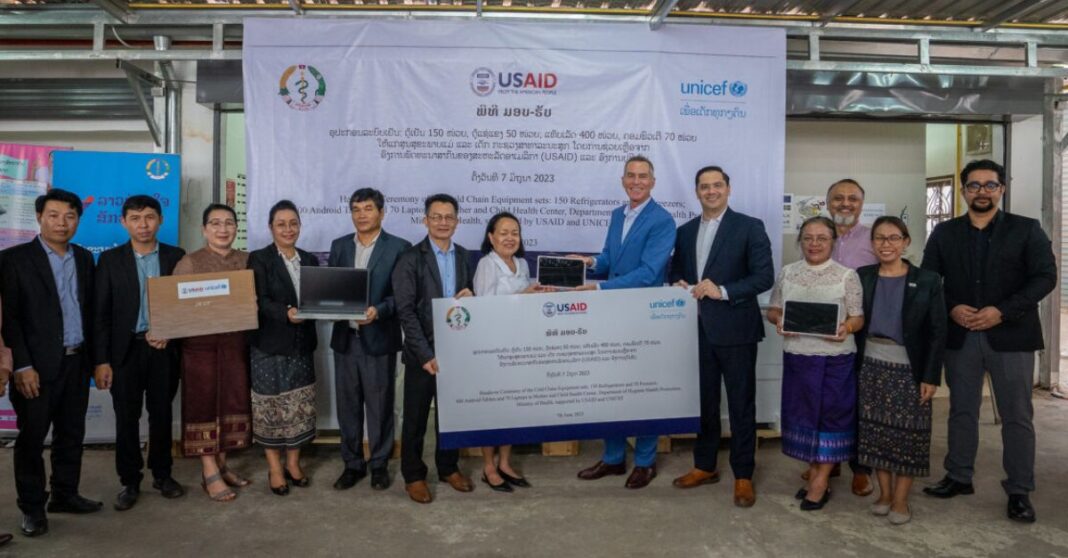The United States through the US Agency for International Development (USAID) officially handed over cold chain and IT equipment to the Ministry of Health of Laos on 12 June, further marking the expanding cooperation between the two countries on COVID-19 vaccination and public health.
Despite declining cases in Laos, COVID-19 remains a threat to public health, livelihoods, and the socio-economic development of the country. The threat of the virus’s possible resurgence also calls for the strengthening of Laos’ capacity to store and roll out vaccines effectively to its population.
“It is important for Laos to remain vigilant and strengthen our ability to effectively respond to COVID-19 and future health demands,“ cautioned Dr. Bandith Soumphonpackdy, Director of the Maternal Child Health Center, Ministry of Health. “The Government of Laos highly values the support from the United States. We also would like to thank USAID and UNICEF for their continued support around vaccination in Laos throughout the years.”
The cold chain equipment provided by USAID included 150 refrigerators and 50 freezers, which will be distributed to health centers and vaccine storage throughout the country. This equipment will expand Laos’ vaccine storage capacity and enable COVID-19 and other vaccines to be stored safely at the optimum temperature. In addition, USAID provided 400 tablets and 70 laptops to the Ministry of Health, which will enable health workers to collect and report on vaccination data and other health programs, and access e-learning modules. The donation from USAID values at USD 400,000, procured through UNICEF.
During the handover, Dr. Kevin Smith, Deputy Country Representative to Laos, USAID, highlighted the expanding comprehensive partnership between Laos and the United States. “USAID is proud of our partnership with the Government of Laos and today’s handover exemplifies the strength of that partnership. It is our hope that the equipment will play a vital role in increasing vaccine storage capacity, strengthening the cold chain system, and improving data entry and monitoring..” Dr. Smith further added, “Having vaccines available at the provincial, district, and health center levels ensures that we can reach the most vulnerable populations and those living in the hardest-to-reach areas.”



